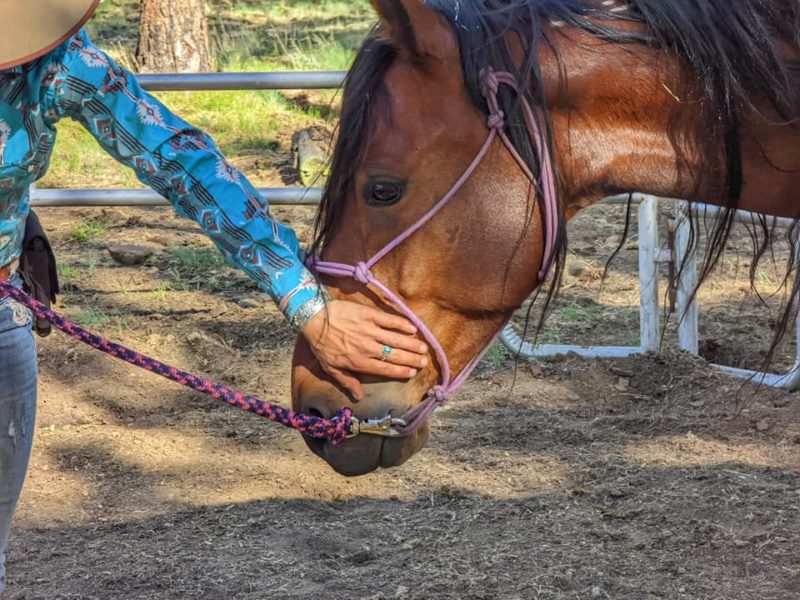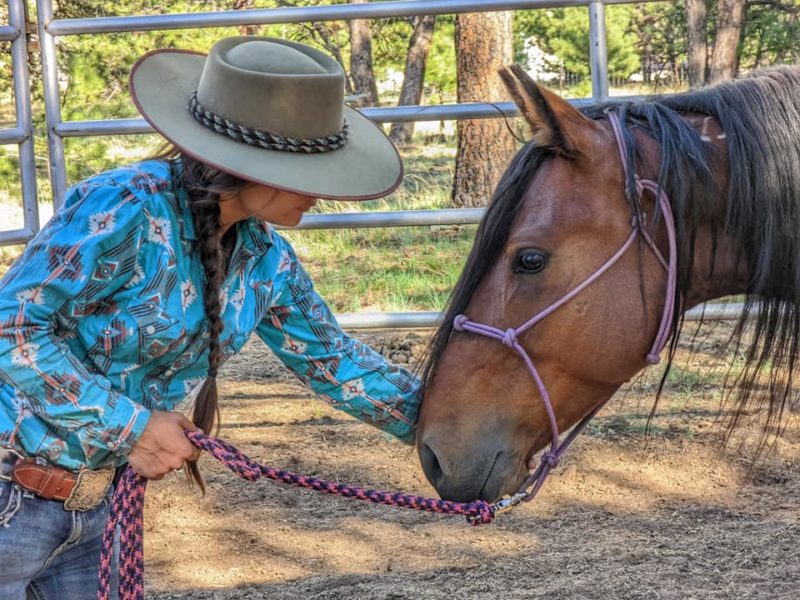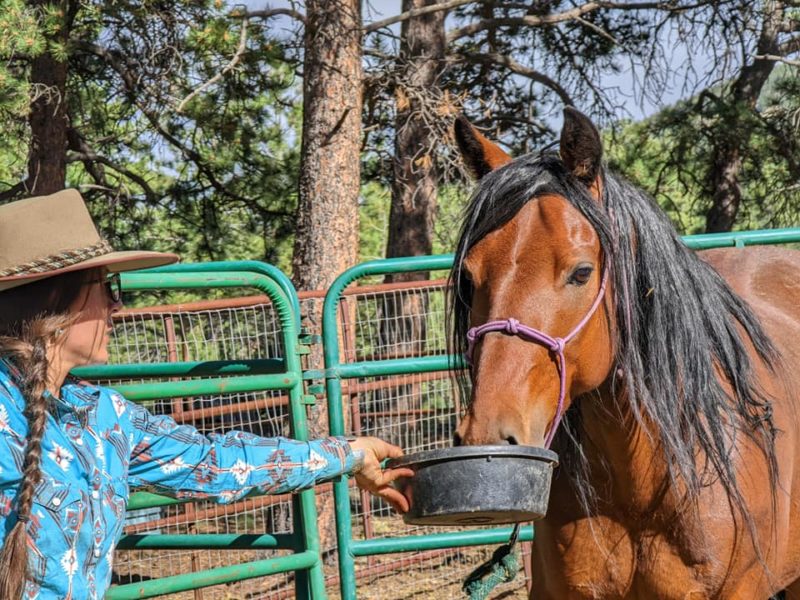Tesla, 5yo Warm Springs, OR Mustang gelding has been an interesting one to work with. Not because he’s a “bad” horse but because of the baggage he carries. He has been bounced around several times, including a trip to auction, before his current owner got him. Various unsuccessful attempts to gentle the gorgeous bay gelding have left their mark and made this horse, for lack of a better word, angry.
When he first came he was nervous, unsettled and would protect his face with evasion, teeth and front feet. His eyes were hard and his muzzle distorted with tension. Thankfully he arrived here just in time for our workshop with Mustang Matt Horse Trainer last month and it took Matt’s mad haltering skills and willingness to quite literally put his life on the line to get this traumatized horse headed in a better direction.
Fast forward a little over a month and the hardness in Tesla’s face is mostly gone. He’s still worried and I can’t say I blame him. You don’t just wipe away years of trauma and start fresh. This is the beginning of his un- and re-learning process and I’m proud of him.
What has been fascinating to me is that Tesla is basically two different horses. The one that gets alarmed over anything near his head, and the one that enjoys touch everywhere else and loves to sniff and explore his surroundings when we walk together, that’s willing, brave and soft. The conclusion Matt and I came to was that the second one is the “real” Tesla, whereas the first one is a mask he has learned to wear out of a perceived need to defend himself.
When he first got here, he couldn’t stand still and was ready to eat anything that came near his face. That was concerning until I discovered somewhat by accident that the one thing that calmed him down was… touch. I’d rub him with the stick and he’d settle down as if it helped him come back to the present moment and into his body. Not that different with human trauma survivors. That’s why weighted blankets and hugs (even butterfly hugs we encourage them to practice on themselves) can have a soothing effect on an overstimulated nervous system.
I was concerned about how Tesla and I would get along when Matt left. He was (and still can be) a lot of horse. With time we figured each other out. It’s taken a variety of tools and methods to get him to this point (not shown here but he loads, was a good boy when his human mom came to visit him, and has had an acutherapy treatment with Maya Suzuki LAc (ShinKyu University). A horse like Tesla is a good reminder that we can’t ever have too many tools in our toolbox, and that teamwork really does make the dream work, in this case Bree Thompson ‘s dream to keep this guy safe, be able to touch and care for him, and hopefully one day make a riding horse out of him.
Overview of approaches used: positive and negative reinforcement, shaping (successive approximations), targeting, counter conditioning and CAT-H. We did actively correct behaviors that are dangerous to humans and land horses in bad places, e.g. lunging at people and objects, biting and striking.



